Holographic Universe Confirmed by the Slit Experiment
Matter exists in two states: the physical and the spiritual. Like in a hologram, with the holographic view and the film plate view, matter exists in two states: the illusion and the reality; the reality being the radius of a black hole or a two dimensional construct which unfolds or is infolded into a seemingly third dimensional experience. The radius of the black hole is two dimensional or a flat plane containing actual waveforms of energy. When a hologram is examined as two dimensional, then one sees interference patterns like those of a waveform when dropped int o a pond of water. I think this solves the slit experiment because sometimes a photon or electron appears as a wave or a particle depending on whether or not it’s being viewed. A hologram appears as a hologram only when it is viewed from a certain point of view. But one knows that a hologram is just an illusion because all a hologram is (when not being viewed as a hologram) is a set of interference patterns (or waveforms).
o a pond of water. I think this solves the slit experiment because sometimes a photon or electron appears as a wave or a particle depending on whether or not it’s being viewed. A hologram appears as a hologram only when it is viewed from a certain point of view. But one knows that a hologram is just an illusion because all a hologram is (when not being viewed as a hologram) is a set of interference patterns (or waveforms).
The theory of the holographic universe solves the slit experiment. Particles are the holographic image of the waveforms but the waveforms present the true reality. The slit experiment confirms the theory of the holographic universe. We exist in two realities – the fake one – hologram and the real one – waves. Our senses detect the fake world but underneath all this holographic illusion is the real deal – an infinite number of wave forms.
If this is new to you, please review the following:
First, what is the slit experiment and why does it matter?
The following video explains the conundrum of the experiment very well in an understandable way but even though the presenter explains it as solved by saying that it is the “collapse of the wave function” due to conscious awareness, he still does not explain the methodology for this happening which can be explained by using the “holographic” model of the universe.
He also mentions about interference patterns. If you drop two stones in water, you create an interference pattern. Here is a video that explains better how interference patterns are created in holograms:
Speaking of which, here is a third video that will clarify this better:
Posted in Science For The New Agewith 1 comment.

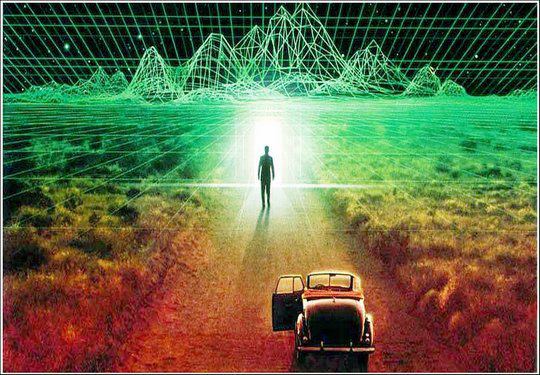

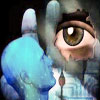
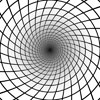
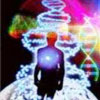
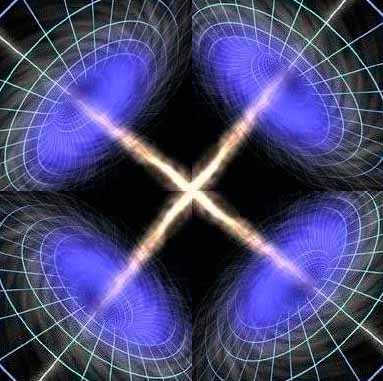
I think you may be onto something but I have a different take. Every electron in your body contains a field that extends to the cosmic event horizon, the horizon where space moves away at the speed of light. . This means you live in the middle of sphere 14BLY in radius. On the surface of the sphere exist the electrons in your body but smeared across the surface of the entire cosmic EH. Think of a kaleidoscope. One image split and fractalized, but in this case it’s holographically encoded. That information smeared across the event horizon is the wave aspect of existence, on a flat 2-D sheet in the inside of the cosmic EH. On the cosmic event horizon every location can be said to contain the information of the entire visible universe but at decreased resolution. You need the whole horizon to get full resolution. .
When two particles exchange information, they provide a reference to each other so that the XYZ location can be defined, and when we capture a reference by seeing which slit an electron went through, we create the entanglement that yields a discrete particle rather than a wave. When two particles exchange information they provide the reference for the hologram to emit the particle in what we view as 3-D space. We live on the cosmic horizon as probabilities until particles exchange information and we pop into existence in 3D space. This happens trillions of times per second all throughout your body as biological processes exchange particle information, so in a way you are like champagne bubbles that form from seemingly nothing and pop into and out of existence as particles exchange information and create entanglement networks.
When you set up an experiment to test for the 2d aspects of our universe you get a wave answer, when you create a reference point you pin down the object you are measuring and it appears as a discrete particle in 3D space. Even the 2-D interference pattern finally uses the reference of the phosphor coated screen which shows the fringe pattern in 3-D space. It’s where the reference is that matters.
The point is the hologram is real. It’s size is defined by the number of qbits of information per Planck Area on the cosmic EH. Juan Maldacena showed using hologram like attributes that gravity can be represented on the cosmic event horizon without needing a corresponding particle. The way our universe operates is any 3D region can be fully defined by its 2-D boundary like there’s nothing that exists in the volume of an object. Take a cube 10x10x10. It’s surface area is 600 cubic units. The volume is 1000 cubic units. In our universe, the holographic principe says we can define everything in the box using only 600 cubic units. A black hole event horizon is the same. A stellar sized black hole, 2 solar masses, is only a mile
or so wide, two suns crammed into a box a mile wide with density’s of billions of tons per centimeter. But the supermassive black holes whose event horizons are larger than our solar system, like M87, even though at billions of solar masses, the overall average density in such a SMBH is that of air. The SMBH Sagittarius A is about as dense as water at 40 million solar masses. As a black hole grows in size, it’s average density decreases just like the cube thing above. Weirdly, if you calculate the density of a black hole with the same average number of particles per square meter as you see in our universe, like 3 hydrogen atoms per square meter, the event horizon calculates to around 15 BLY, roughly the size of our universe like we are living in a black hole. The bigger you make the cube the greater disparity of the area of the boundary and the volume. Every piece of information that falls into a black hole adds one Planck Area, 10^-72m or area to the event horizon. The periphery of an event horizon contains all the information that fell into the black hole. Time stops at event horizons which means it contains the past present and future and I’m not sure how to test that.
Holograms are real 3-D information encoded on a 2-D surface. That information actually exists on the 2-D film but only becomes something we can recognize once we add a reference beam. We can’t work with the cosmic EH being forever far away, or really see what’s on it, but the information exists otherwise we wouldn’t exist.